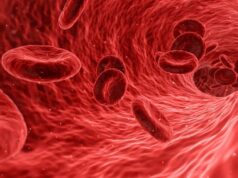
Ki Hong Choi (Division of Cardiology, Department of Medicine, Cardiac and Vascular Centre, Samsung Medical Center, Sungkyunkwan University School of Medicine, Seoul, South Korea) and others report in EuroIntervention that percutaneous coronary intervention (PCI) is not associated with a significant reduction in cardiac death compared with medical management in diabetic patients with chronic total occlusions. However, PCI in this cohort of patients does reduce the risk of major adverse cardiac events (MACE).
The authors write that—as one registry indicates—34–40% of patients with chronic total occlusion have diabetes. However, they add that data for the optimal treatment strategy for patients with chronic total occlusions with (and without) diabetes are limited. “Therefore, we investigated the long-term clinical outcomes of coronary chronic total occlusion patients treated with PCI vs. medical therapy according to the presence of diabetes mellitus,” Choi et al note.
In the single-centre registry, 1,547 patients with chronic total occlusions were treated with either medical therapy or PCI. Of these, 702 had diabetes and 845 did not. Furthermore, overall, 833 patients underwent PCI—of whom, 384 had diabetes and 499 did not. The decision to perform revascularisation or use medical therapy was based, the authors comment, on patient and physician preference. Patients in the diabetes group were significantly older and had a higher frequency of chronic kidney disease, hypertension, previous cerebrovascular accident, multivessel disease, right coronary artery involvement, and high SYNTAX score than those in the non-diabetes group. To account for any interactions between diabetes and treatment strategy that could affect clinical outcomes, Choi et al used the inverse probability of treatment weighted (IPTW) method. They write: “After performing the IPTW method, almost no variables had significant inter-group differences except left anterior descending artery involvement and blunt stump in the non-diabetes group and multivessel disease in the diabetes group.”
After a mean follow-up of 46 months, the rate of cardiac death was significantly higher among non-diabetic patients who received medical therapy alone compared with those who had undergone PCI—8.1% vs. 2.2%, respectively (p=0.007). The rate of MACE was also significantly higher in this group: 22% vs. 12.8% for those who had undergone PCI (p=0.03). However, there were no significant differences in the rate of cardiac death between diabetic patients who received medical management and those who underwent PCI (11.9% vs. 6.8%, respectively; p=0.77). Choi et al report: “Among diabetic patients, MACE was only significantly different between the two groups (29.6% vs. 20.1%; p=0.03). There was a significant interaction between diabetes and cardiac death (interaction p=0.03), but not with MACE (interaction p=0.7).” They add that, after performing the IPTW method, cardiac death was still significantly higher among non-diabetic patients who received medical therapy compared with those underwent PCI and still similar between medical therapy and PCI patients in the diabetes group.
Observing that the BARI 2D study found that PCI was not associated with a significant reduction in MACE compared with medical therapy in patients with type 2 diabetes, Choi et al comment that only 34.7% of patients in this trial received a drug-eluting stent whereas (of those who underwent PCI) 100% of patients in their study did. Therefore, they “speculate that the declining repeat revascularisation resulting from the popular usage of drug-eluting stents may reduce the incidence of MACE in the PCI group compared with the BARI 2D trial”.
Choi et al conclude: “For the treatment of chronic total occlusion, PCI may reduce the risk of cardiac mortality in non-diabetic patients. PCI might be actively considered the treatment option for the treatment of chronic total occlusion with low-risk patients such as non-diabetes.”










